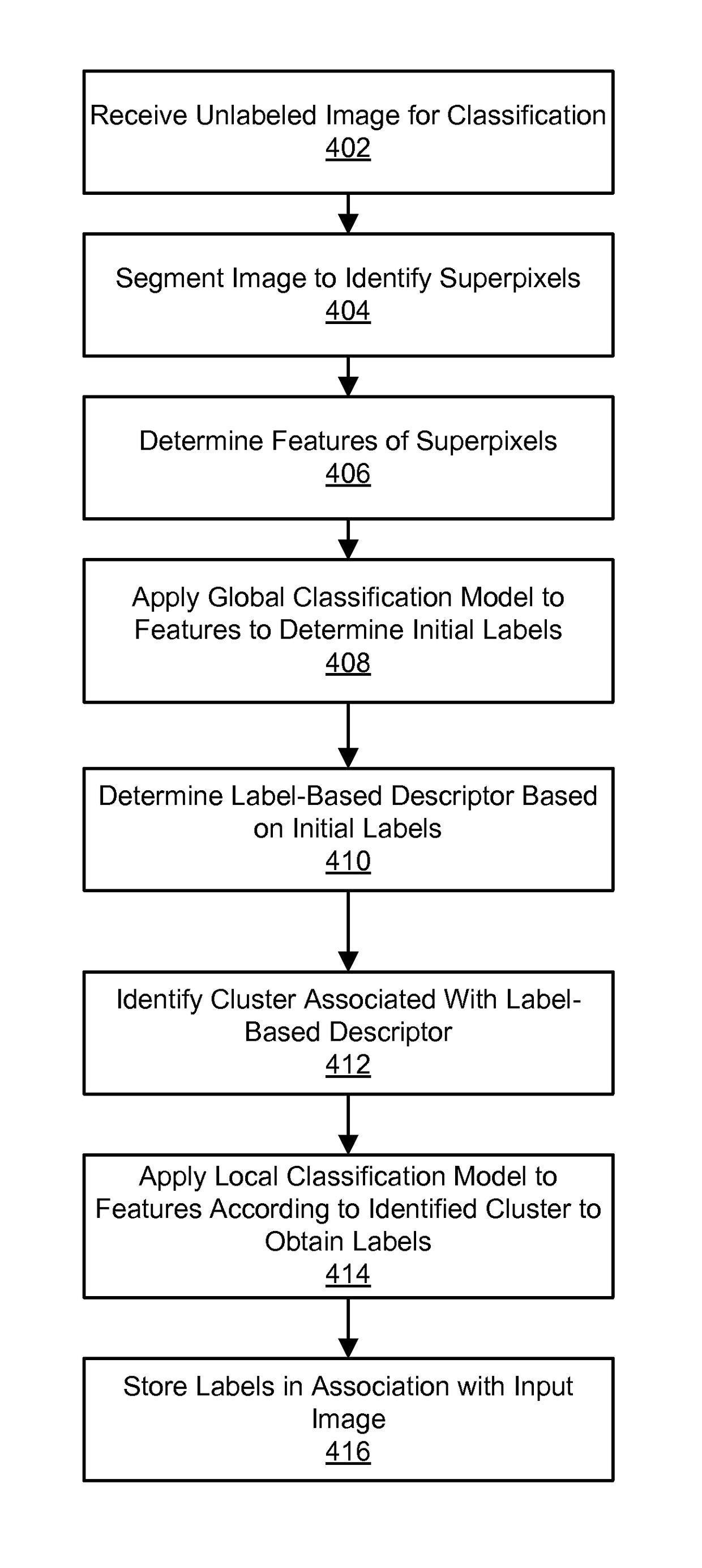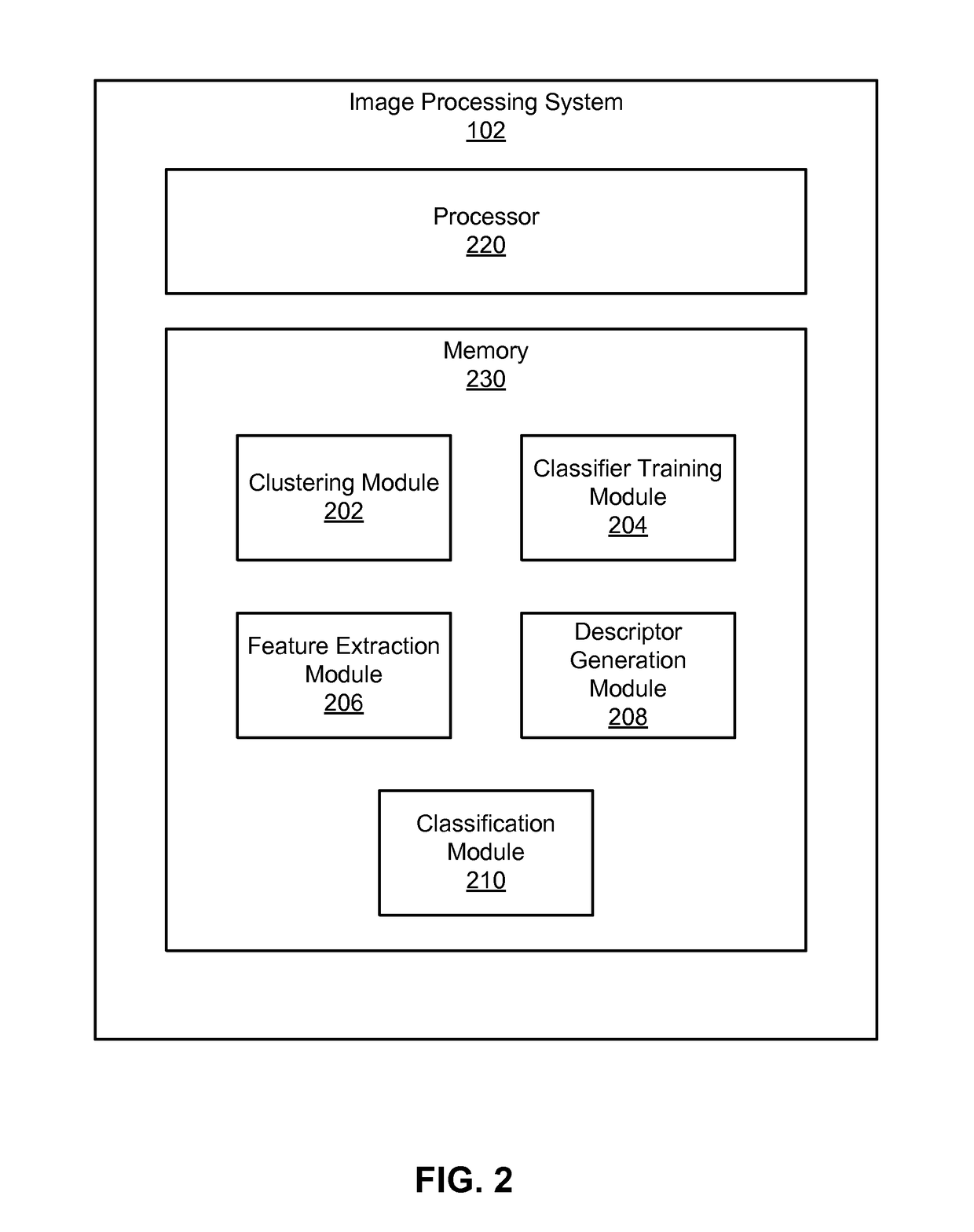Hierarchical conditional random field model for labeling and segmenting images
a random field model and hierarchy technology, applied in image analysis, image enhancement, instruments, etc., can solve the problems of insufficient scalability and performance of conventional labeling techniques
- Summary
- Abstract
- Description
- Claims
- Application Information
AI Technical Summary
Problems solved by technology
Method used
Image
Examples
Embodiment Construction
Overview
[0015]An image segmentation and labeling process determines pixel-by-pixel labels for an unlabeled input image, where each label indicates a class of objects depicted by the associated pixel. For example, in a mapping application, images of street view scenes may be segmented and labeled based on the classes: sky, architecture, plant, ground, and miscellaneous (e.g., people, cars, etc.). A hierarchical classification model is used that combines both parametric (i.e., supervised) and non-parametric classification (i.e., unsupervised) techniques. Thus, in addition to learning a global classification model in a parametric training phase based on labeled training images, the training images are also clustered in a non-parametric manner. Then local classification models are learned for each cluster. Beneficially, the hierarchical classification technique provides superior performance and scalability compared to parametric or non-parametric classification techniques used in isolat...
PUM
 Login to View More
Login to View More Abstract
Description
Claims
Application Information
 Login to View More
Login to View More - R&D
- Intellectual Property
- Life Sciences
- Materials
- Tech Scout
- Unparalleled Data Quality
- Higher Quality Content
- 60% Fewer Hallucinations
Browse by: Latest US Patents, China's latest patents, Technical Efficacy Thesaurus, Application Domain, Technology Topic, Popular Technical Reports.
© 2025 PatSnap. All rights reserved.Legal|Privacy policy|Modern Slavery Act Transparency Statement|Sitemap|About US| Contact US: help@patsnap.com



